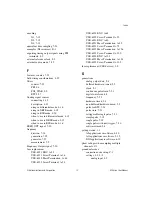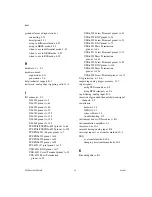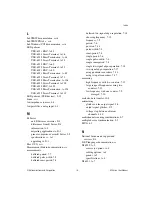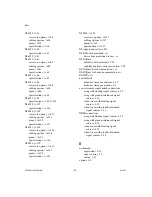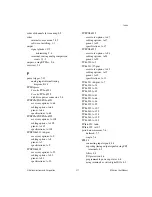
Glossary
G-16
ni.com
S
s
Seconds.
S
Samples.
sample counter
The clock that counts the output of the channel clock, in other words, the
number of samples taken. On devices with simultaneous sampling, this
counter counts the output of the scan clock and hence the number of scans.
scan
One or more analog or digital input samples. Typically, the number of input
samples in a scan is equal to the number of channels in the input group. For
example, one pulse from the scan clock produces one scan which acquires
one new sample from every analog input channel in the group.
scan interval
Controls how often a scan is initialized; is regulated by the AI Sample
Clock signal.
scan rate
Reciprocal of the scan interval.
SCC
Signal Conditioning Carriers—A compact, modular form factor for signal
conditioning modules.
SCXI
Signal Conditioning eXtensions for Instrumentation—The National
Instruments product line for conditioning low-level signals within an
external chassis near sensors so that only high-level signals are sent to DAQ
devices in the noisy PC environment.
sensor
A device that responds to a physical stimulus (heat, light, sound, pressure,
motion, flow, and so on), and produces a corresponding electrical signal.
Primary characteristics of sensors are sensitivity, frequency range, and
linearity.
signal conditioning
1. Electronic equipment that makes transducer or other signals suitable in
level and range to be transmitted over a distance, or to interface with
voltage input instruments.
2. The manipulation of signals to prepare them for digitizing.
signal source
A generic term for any instrument in the family of signal generators.
signals
Signals are waveforms containing information. Although physical signals
can be in the form of mechanical, electromagnetic, or other forms, they are
most often converted to electronic form for measurement.

























